2002 Kansas Ice Storm
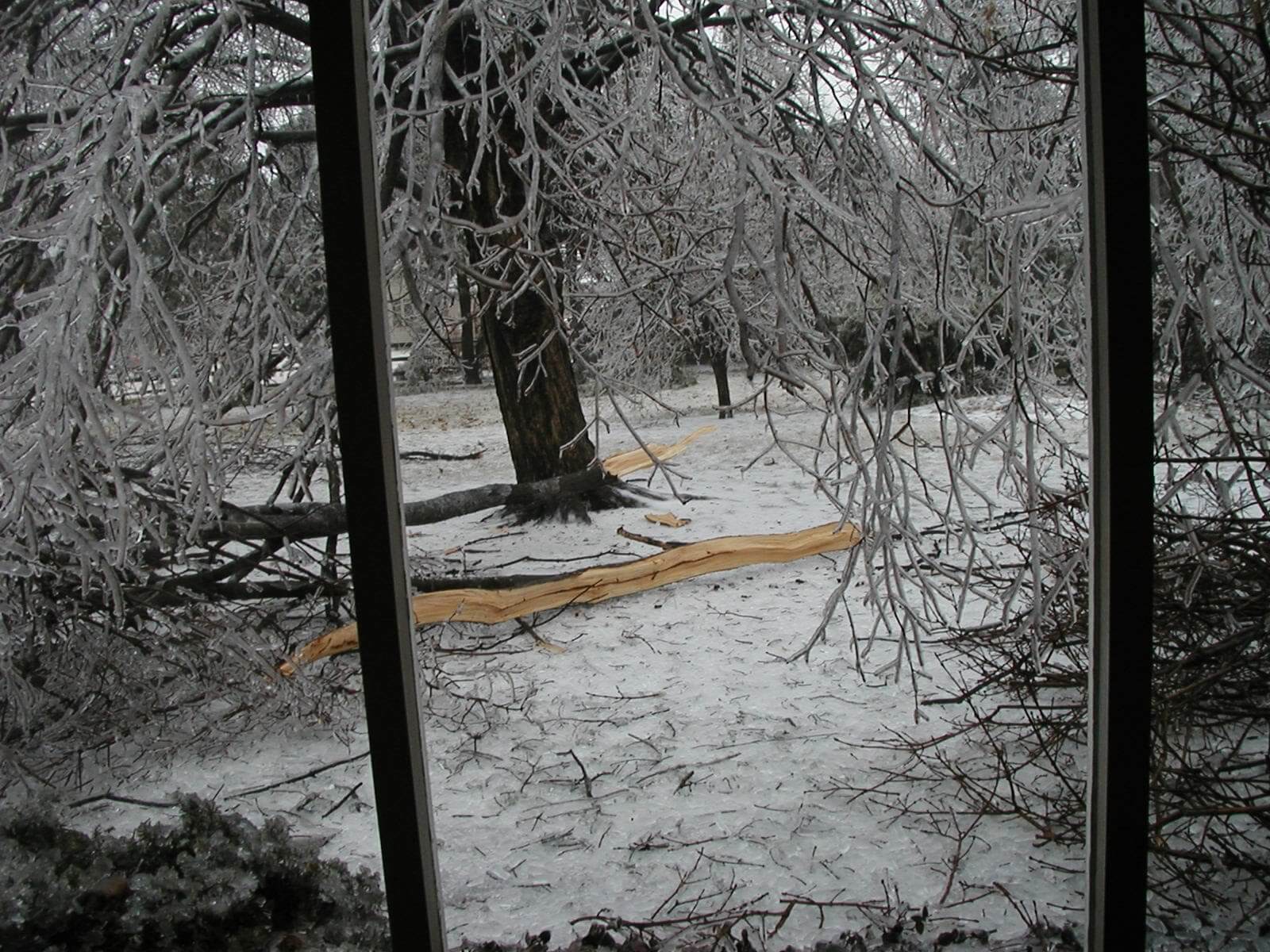
This story will be about the largest winter storm I ever lived, which after writing this post appears to even have an entry in Wikipedia as the 2002 Central Plains ice storm. I didn't have a cell phone back then, nor do I think any phones of that era had the proper quality for photos.
Based on exif data, I can see I was using an Olympus D-510 camera, a 2 megapixel camera with a max resolution of 1600 x 1200 pixels. Did I own this camera? Did I borrow my parents? - I have no idea and cannot remember. I'm just happy these photos stand up a bit almost 20 years later.
So lets look back at this event with the benefit of seeing the full story. NOAA reported a 4.021 on the RSI scale, which fits into the "Significant" scale. The full scale being:
| Category | RSI Value | Description |
|---|---|---|
| 1 | 1-3 | Noteable |
| 2 | 3-6 | Significant |
| 3 | 6-10 | Major |
| 4 | 10-18 | Crippling |
| 5 | 18+ | Extreme |
So it apparently wasn't that bad, but when you realize that:
- 650,000 were left without power
- 1 death
- $111 million in damage
- Kansas, Missouri & Oklahoma affected
- 3 inches of ice
All of that together sounds quite intense, but many other locations have registered a CAT5 winter storm just in the time I've been alive. However, as I research those the story is the same - snow on snow on snow. They may have 18 inches of snow in a CAT5 storm, but it seems like ice is so much more devastating than snow.
In Kansas in 2002 we saw trees collapsing, roofs collapsing and power lines crippling under the immense weight of ice.
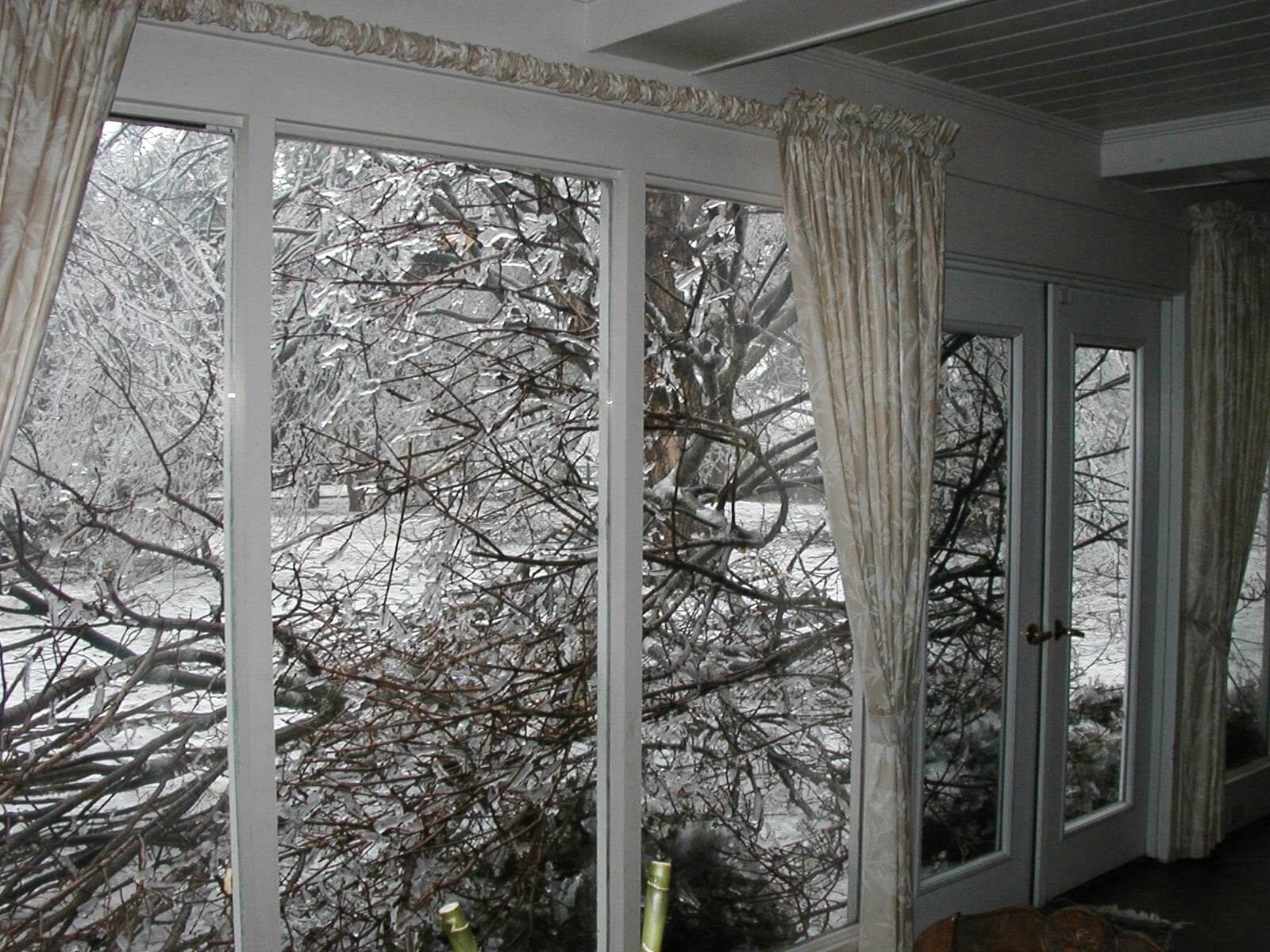
This first picture shows how lucky our family got with such a large branch collapsing and crashing to the ground. It may have scraped the windows and roof as it collapsed, but there was no broken glass. Other families weren't as lucky with branches falling to break roof or windows leading to a chilly night.
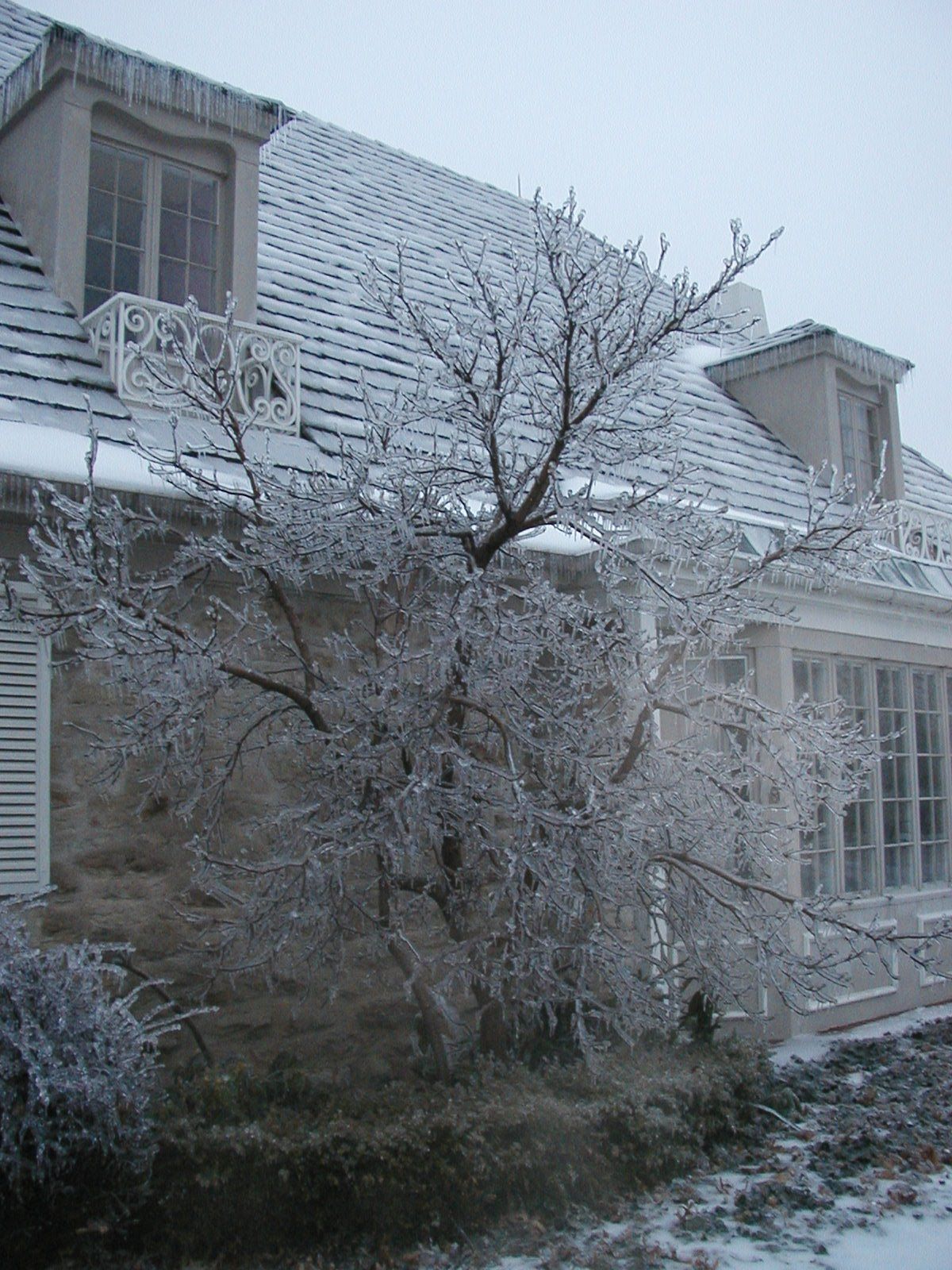
From above you can tell this is not a roof full of snow, but a roof full of a few inches of frozen water. We know from science that roughly one-inch of ice weights around five pounds per square foot, so knowing we got 3 inches of ice was roughly 15 pounds of weight per square foot. Roofs can support more than that, so guess nothing was truly in danger unless the roof was already weakened.
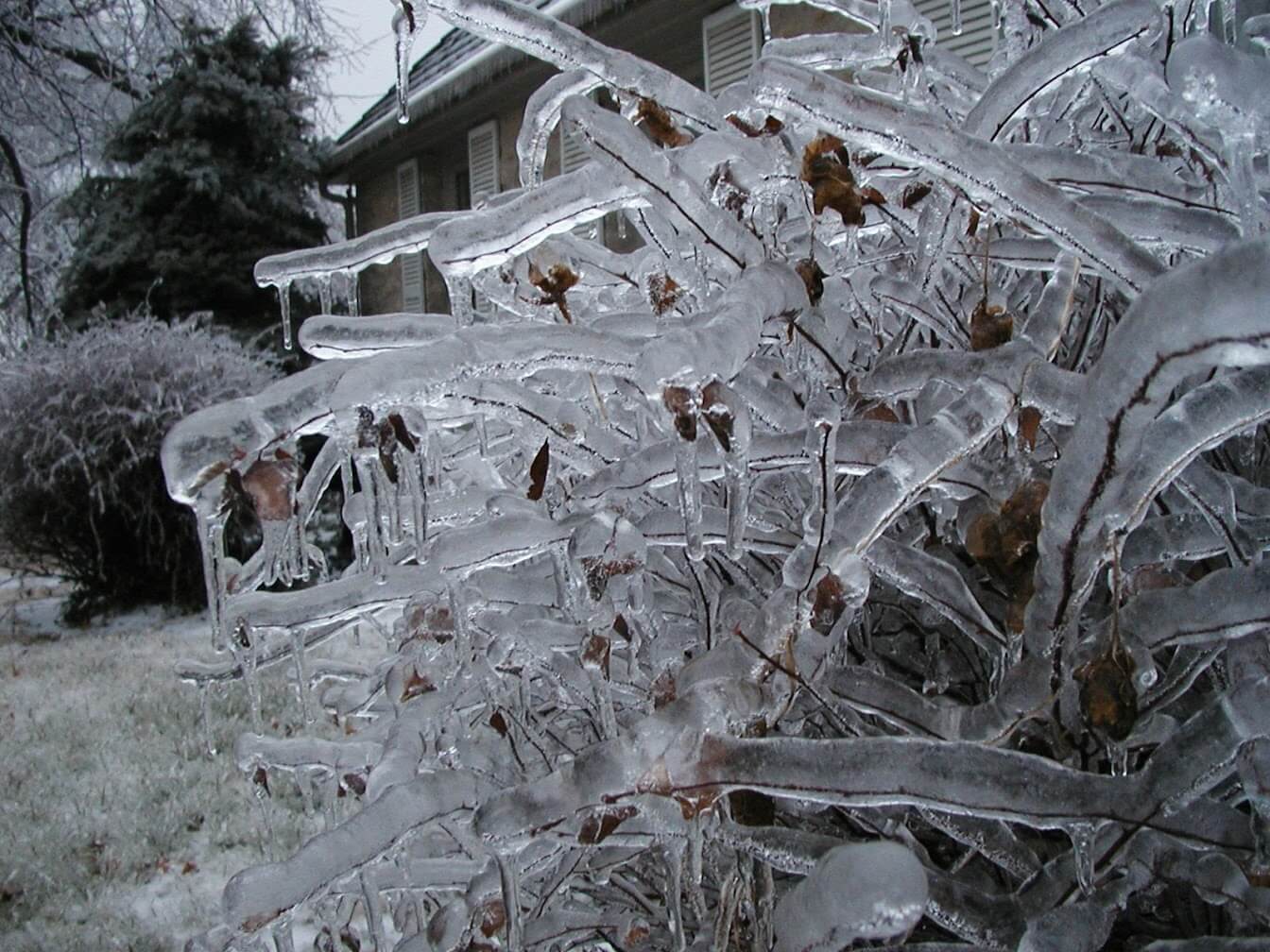
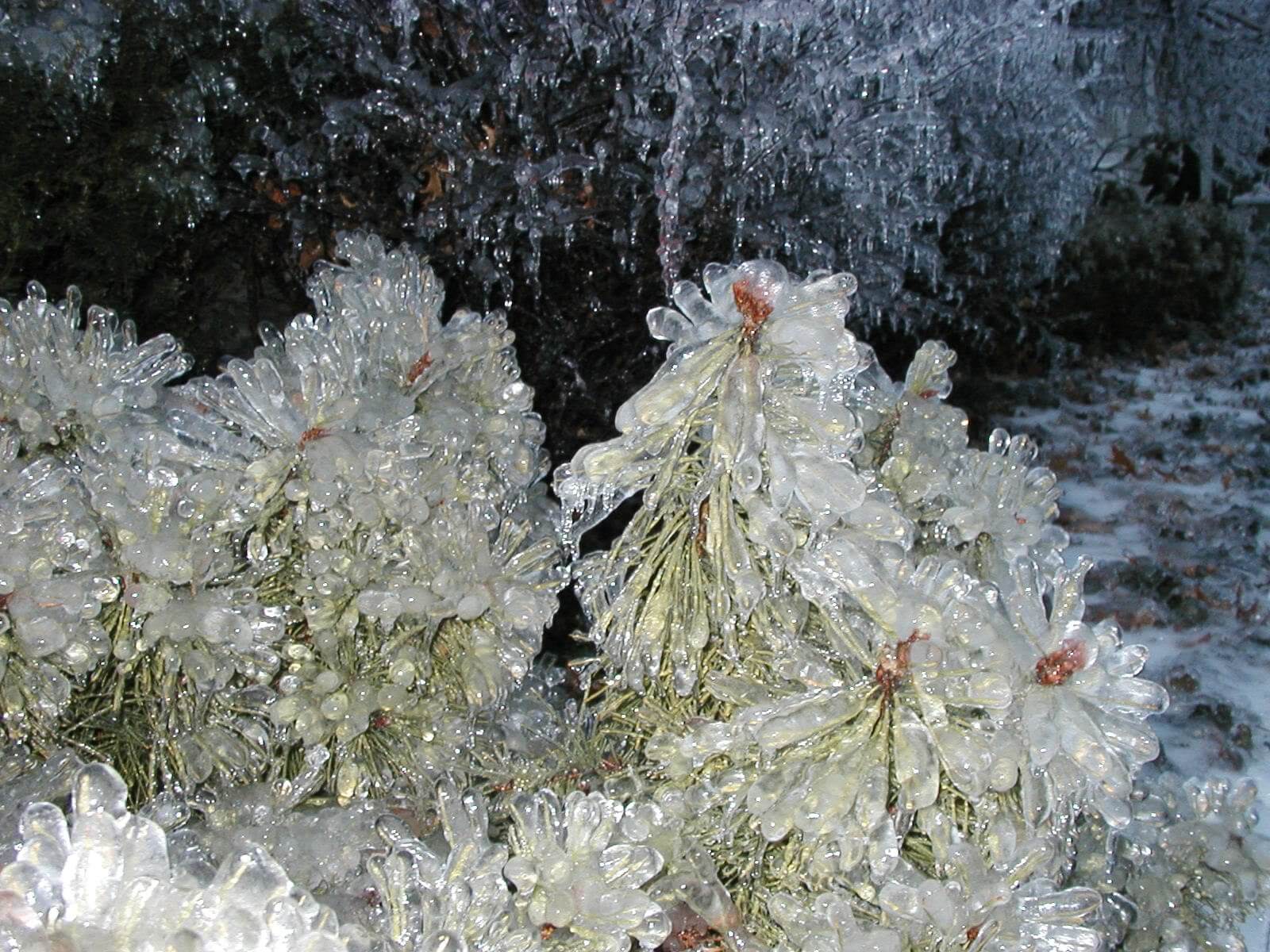
Shrubs and Pines - 7:51am (January 31, 2002)
Now looking at every little plant, tree, shrub and bush was quite possibly the most interesting part of the ice storm. It was obviously a snow day on that Thursday so stepping around on each grass blade as it cracked to get a closer inspection of the frozen landscape.

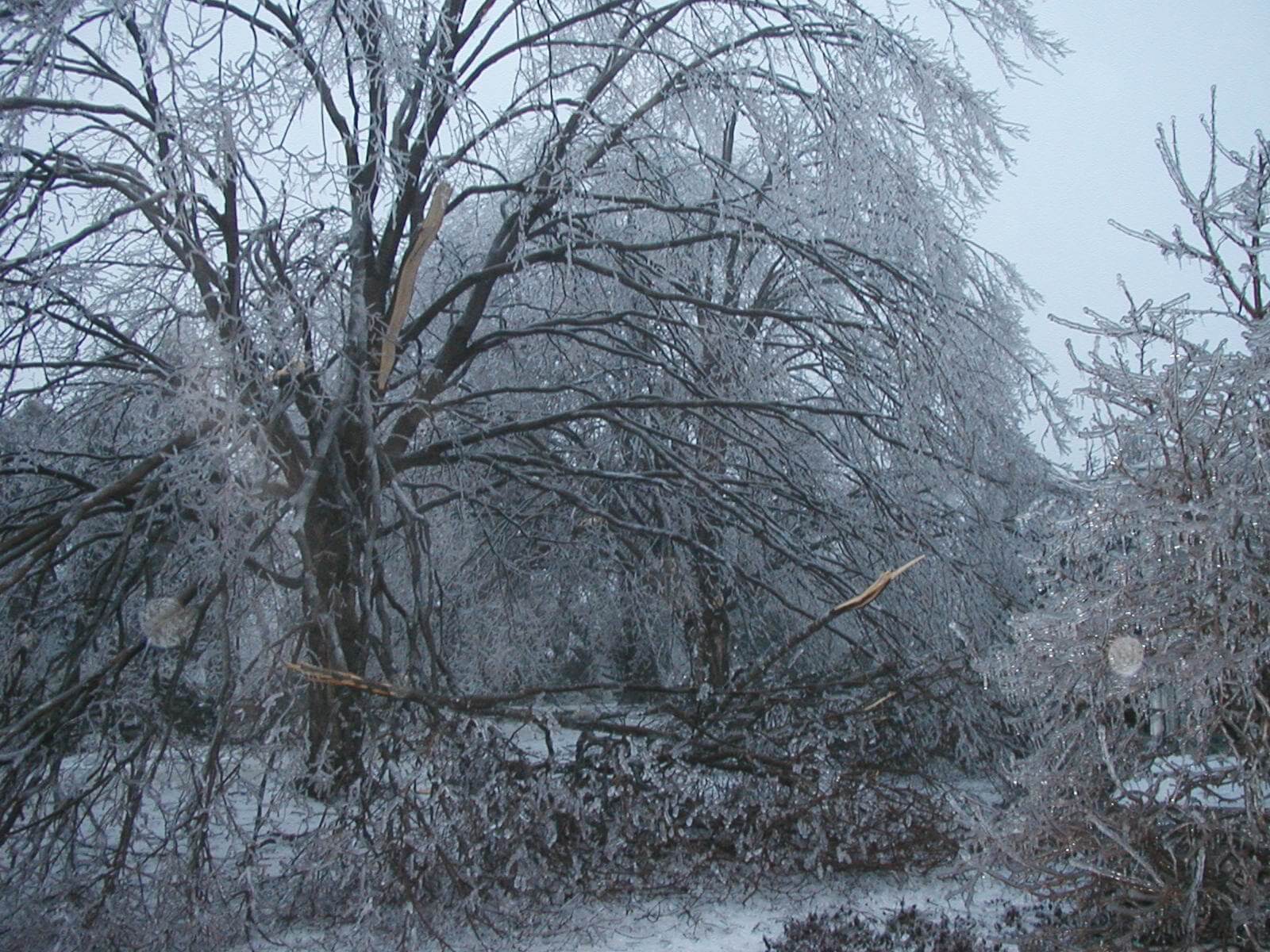
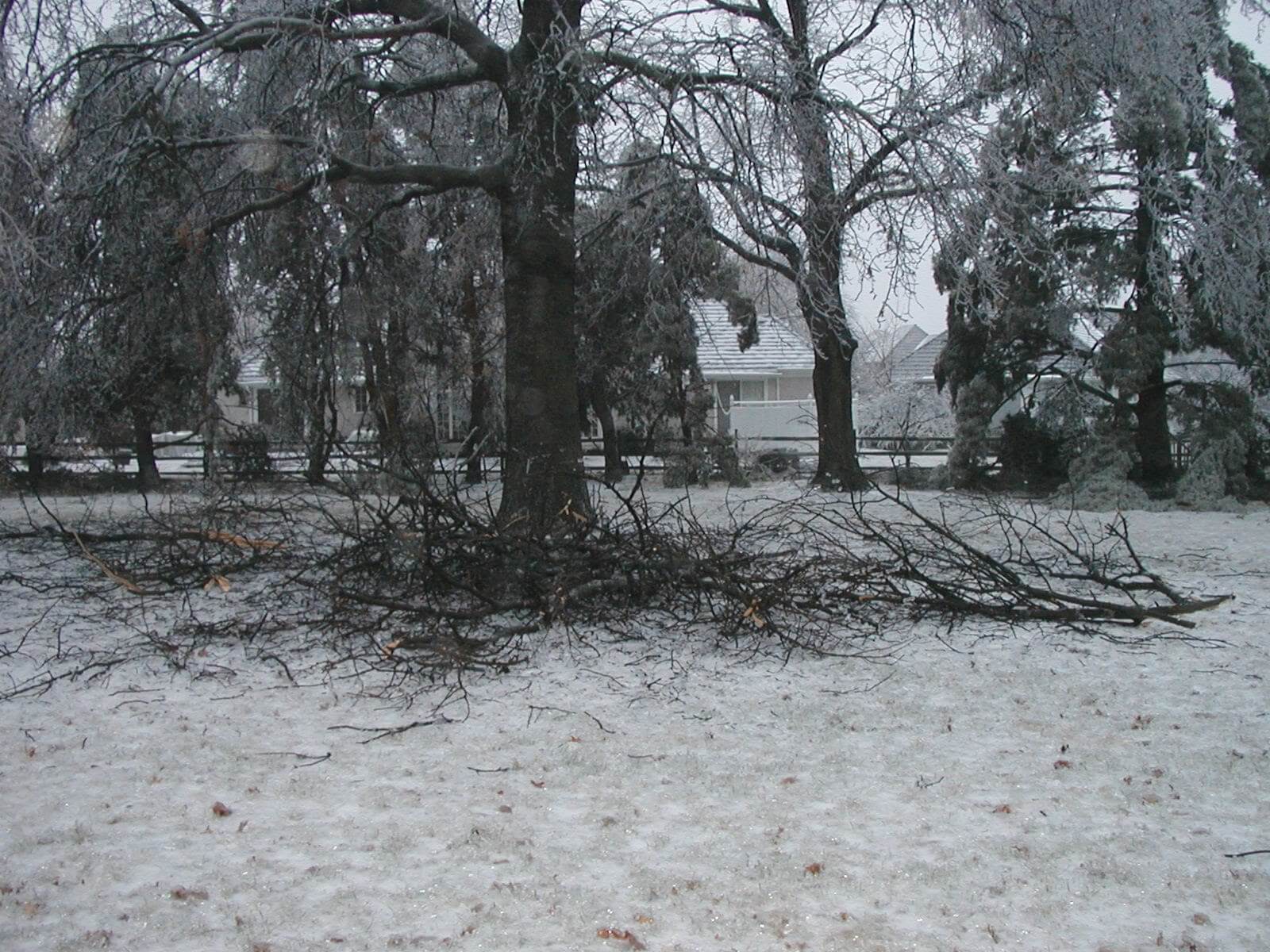

Yard Damage - January 31, 2002
From the photos above you can tell that trees that been around for probably 70+ years could not remain unscathed from this storm. While some strong trees only lost a handful of branches others collapsed in half breaking somewhere in the middle. Lucky for us, those trees circled the property and thus could fall safely into the yard with only damage being to the split rail fence.
Even the older stronger pine trees in the corner were no match. The crackling and damage continued throughout the morning as the stress was too much to hold.
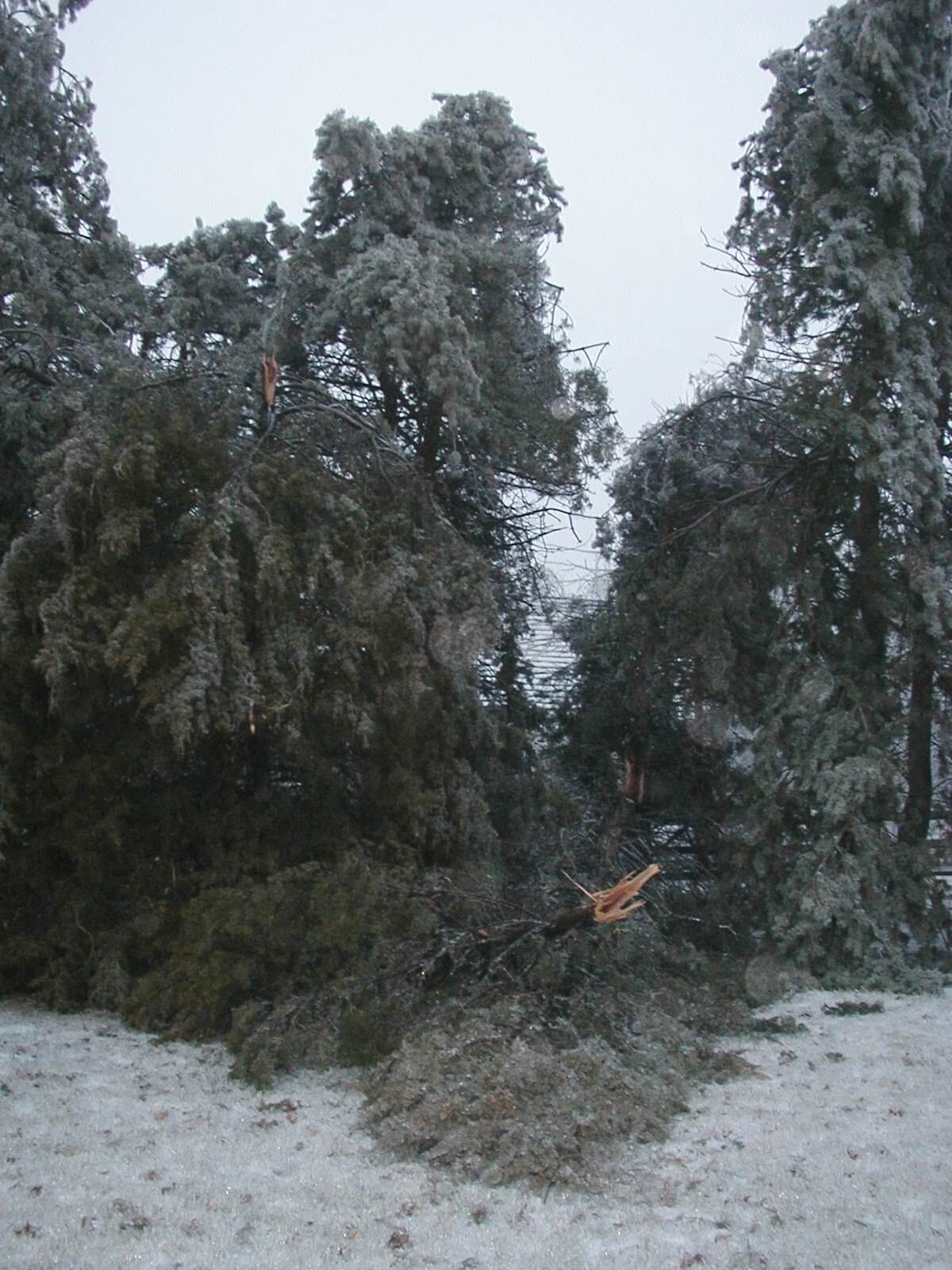
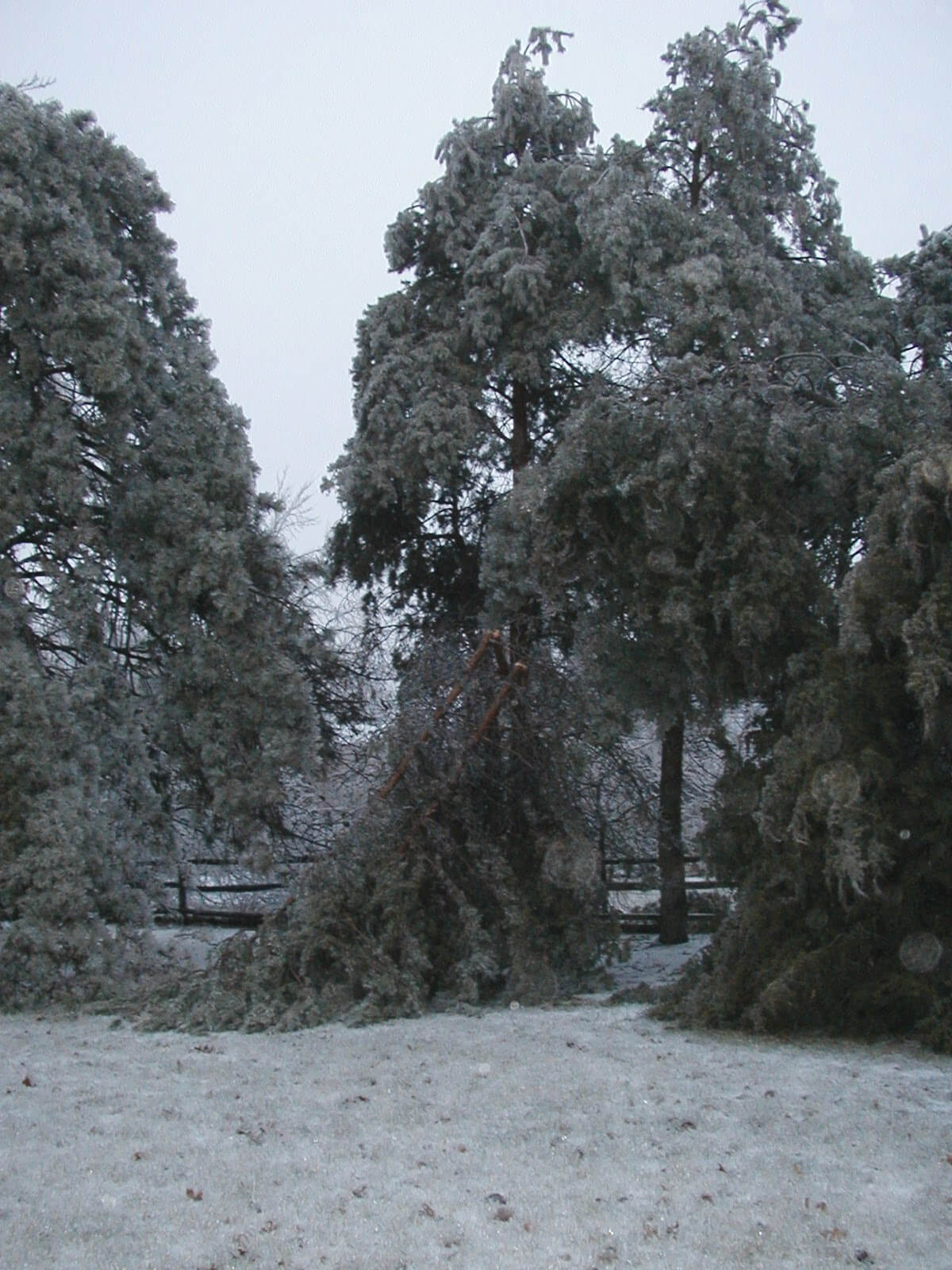
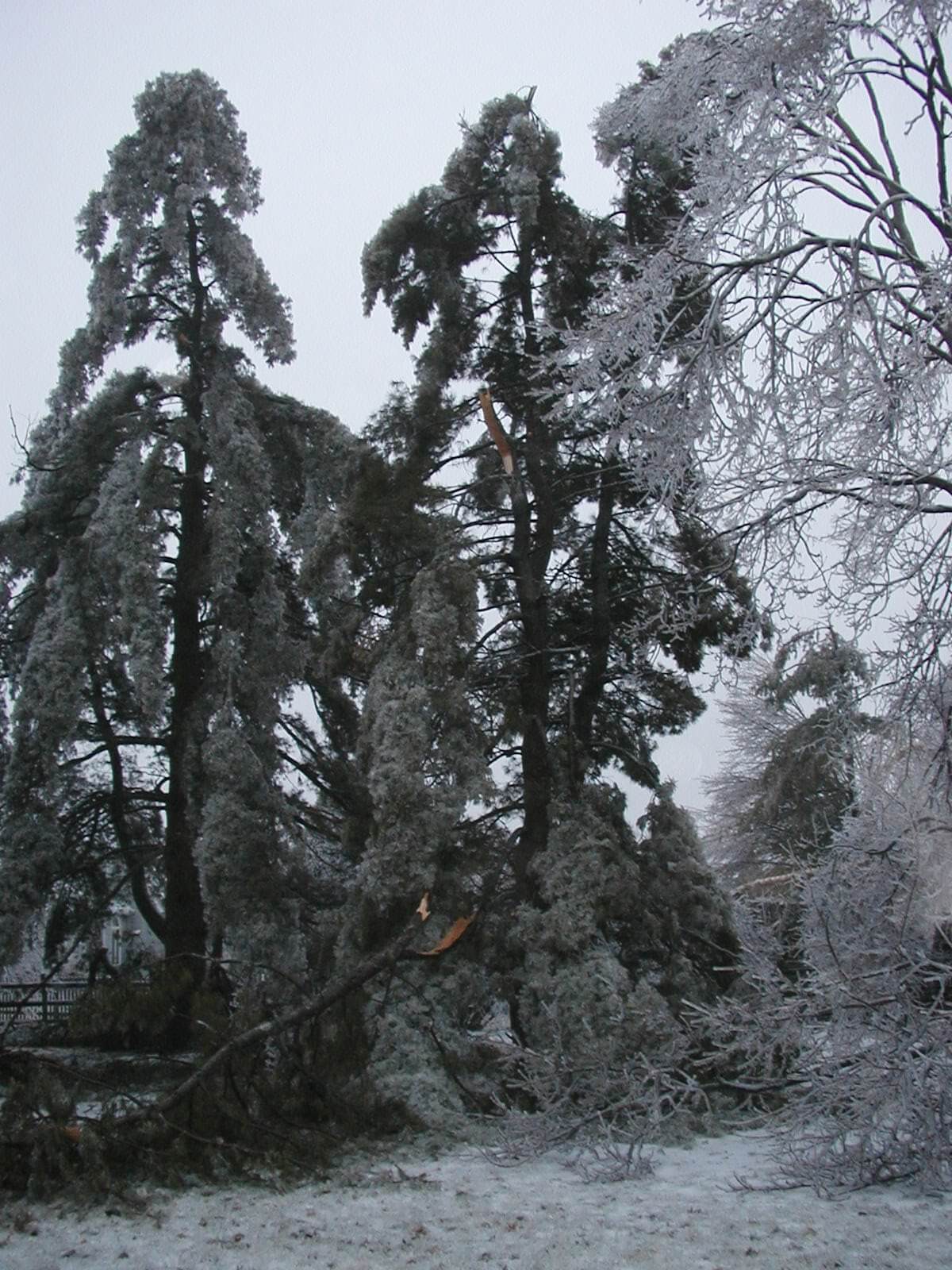
The Pine Corner - 7:44am (January 31, 2002)
Driving around was not the safest, but a Ford Excursion had some extra tricks to make the pass out of the driveway. Basketball wasn't going to happen, which was strange since days before the storm it was easily 60 out.
As you walked around outside it was like the Earth stood still that day - with not much noise from humans. What you did hear was the creepy sound of trees buckling and crackling as they collapsed under weight. As those trees went down they more than likely took power lines with them, which lead to many folks then enduring a many week process without power.

Finally, as my photos run out. A picture as I attempted to shovel the driveway of the ice. A difficult task as you had to get under the ice first and shovel away the strength of ice bonded together.
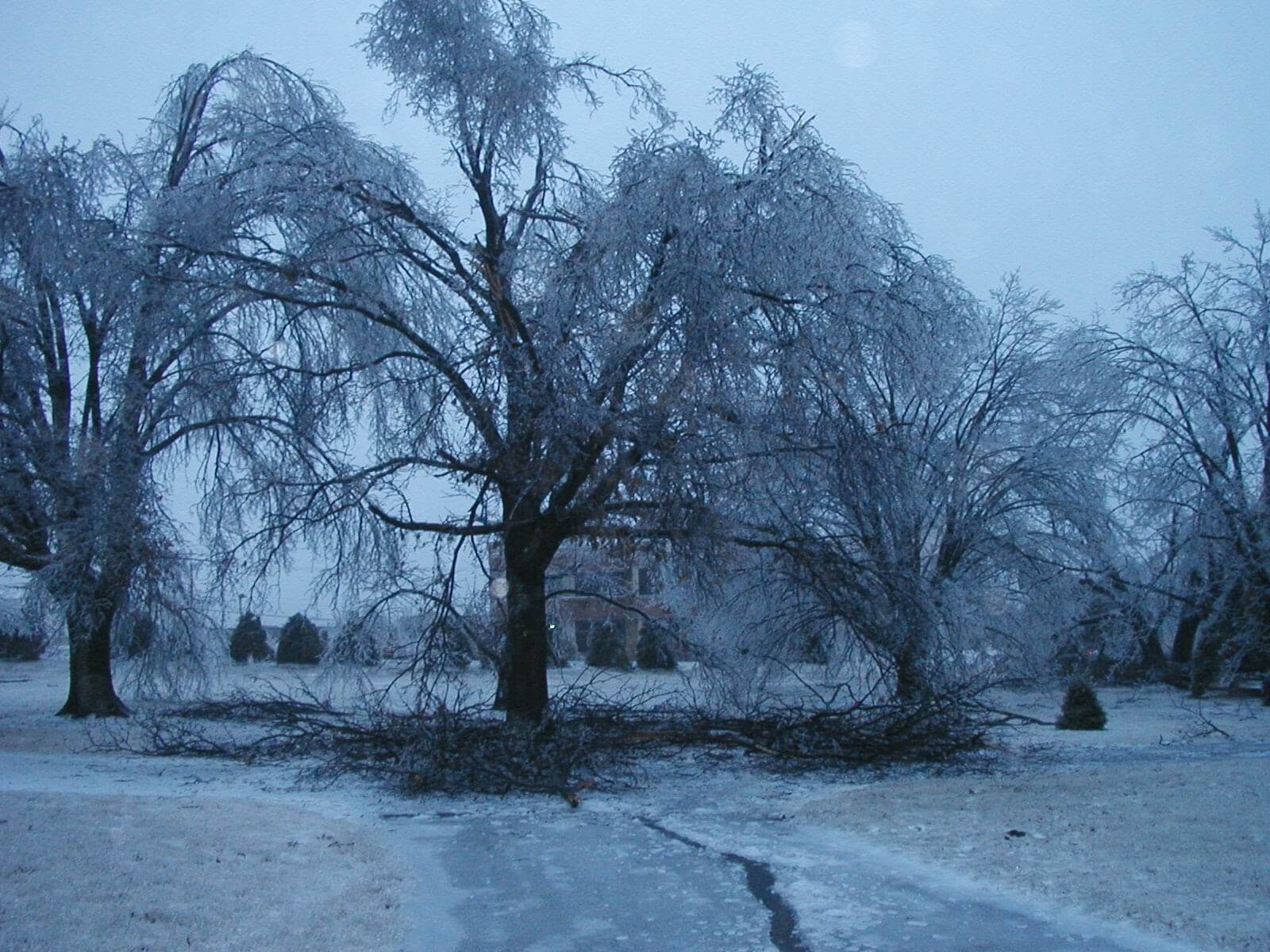
Now these photos are uploaded and no longer stuck on an old hard drive. Perhaps a few folks will stumble upon a Google search looking for memories of this storm.
